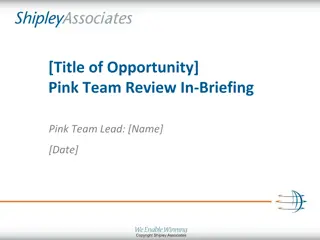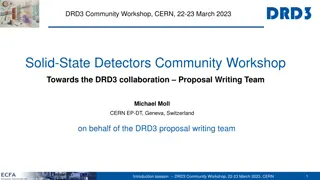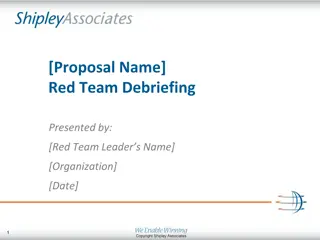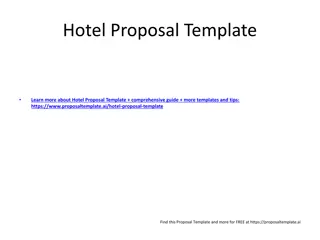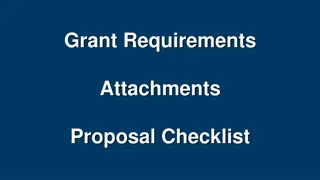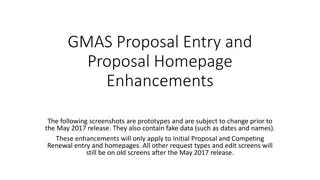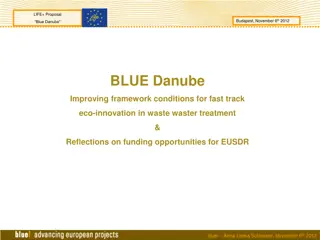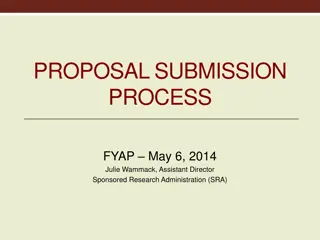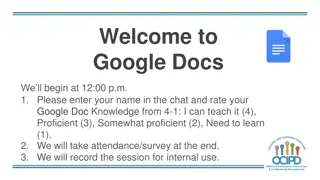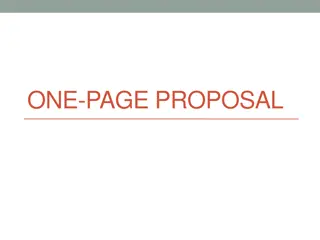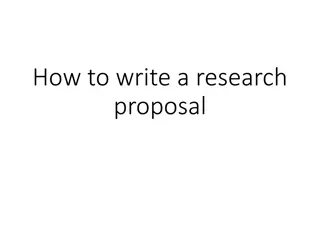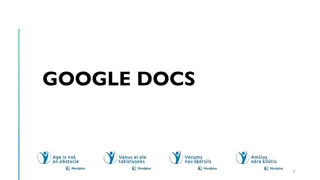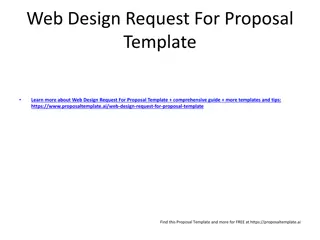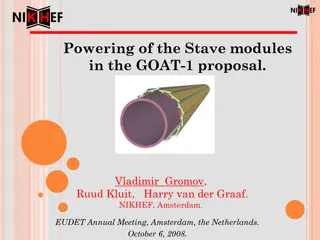
ECE 445 Spring Semester 2025: Updated Schedule, Assignments, and Project Proposal Guidelines
Stay updated with important changes in ECE 445 for the Spring Semester 2025. Learn about revised deadlines, new review sessions, and detailed project proposal guidelines. Get ready for a successful project journey with valuable insights and instructions provided by Professors Arne Fliflet, Viktor Gruev, Michael Oelze, and Yang Zhao.
Uploaded on | 2 Views
Download Presentation

Please find below an Image/Link to download the presentation.
The content on the website is provided AS IS for your information and personal use only. It may not be sold, licensed, or shared on other websites without obtaining consent from the author. If you encounter any issues during the download, it is possible that the publisher has removed the file from their server.
You are allowed to download the files provided on this website for personal or commercial use, subject to the condition that they are used lawfully. All files are the property of their respective owners.
The content on the website is provided AS IS for your information and personal use only. It may not be sold, licensed, or shared on other websites without obtaining consent from the author.
E N D
Presentation Transcript
ECE 445 Lecture 3 Spring Semester 2025 Prof. Arne Fliflet (afliflet@illinois.edu) Prof. Viktor Gruev (vgruev@Illinois.edu) Prof. Michael Oelze (oelze@illinois.edu) Prof. Yang Zhao (yzhaoui@illinois.edu)
Updated Course Schedule and Assignments Proposals are due in Week 4 as before (next week) The Design Review in Week 7 has been replaced by a Proposal Review in Week 5 (in two weeks) The Design Document, due in Week 7, provides a complete and detailed design for your project as before (in 4 weeks) An in-lab Breadboard Demo with instructor and project TA has been added in Week 8 (in 5 weeks) The Project Demonstration and Final Presentation will be held during Weeks 15 and 16 as before Final Report provides complete documentation of completed project including PCB files.
The Proposal The proposal contains four sections whose purpose is to articulate: 1. Introduction What is your problem? Why is it important? How do you propose to solve it? What is different about your approach? 2. Design and Requirements How will you implement your proposed solution? What are the requirements each component needs to satisfy? What is the most difficult part? 3. Ethics and Safety 4. References
1. Introduction Title page - Project title, team number, team members, TA, Instructor, Course No. Problem and background Solution with visual aid High-Level Requirements - What quantitative characteristics must your project exhibit to solve the problem? - Maximum of 3 in complete sentences
2. Design Block Diagram How are components connected? Each block is a subsystem Show power connections and flow between blocks Show signals and data flow between blocks Modularity: each block is a self-contained subsystem with inputs and outputs Subsystem Descriptions System summary Description of each subsystem and how it connects to others Important subsystems typically include power, controller, sensor, actuator, and display components Communication methods and microprocessor needed Subsystem Requirements quantitative and testable Not from datasheets Risk analysis Which requirement will be most difficult?
3. Ethics and Safety Refer to IEEE/ACM codes of ethics and course ethics guidelines Understand how these codes relate to your project Discuss ethical concerns for your project if none justify yourself Refer to course safety guidelines page Discuss safety concerns Electrical safety Mechanical safety Lab safety Consider safety of yourselves and end users If you have hazardous elements to your project, you may need special training and adopt special procedures for your project.
4. Citations and References A list of references formatted using the IEEE standard Should include things like Textbooks or data sheets Informative articles or tutorials used IEEE code of Ethics Internet (YouTube) links may be included but are not considered references by themselves Let us know if you are carrying over projects from other places (classes, startups, student teams, ECE 445 project )
Writing Tips Use writing resources on the course website Follow IEEE citation guidelines Use provided LaTeX or Word template Use correct formatting for figures, tables, schematics, etc. Use of AI is allowed but you must take ownership of all written work and reference carefully
The Proposal Review 30-min. presentation of proposal document Teams will talk from proposal document Discuss block diagram Summarize power, controller, sensor, activator, and display subsystems. Discuss choice of wi-fi, Bluetooth, other wireless communications systems Microprocessor choice Most challenging requirement Attended by instructor, two TAs, and peer reviewers Look at scope and complexity Receive final project approval See Proposal Review grading rubric
The Design Document The design document communicates the complete and detailed design of your project It consists basically of the same sections as the proposal but is substantially more detailed and includes new project information The introduction section should be similar to the proposal introduction but should include any updates such as changes to the high-level requirements The design section will be more detailed and contain new information The block diagram should contain more information about voltages, currents, and signals The physical diagram of the project should indicate physical dimensions, placement of sensors and actuators, and be accompanied by a descriptive paragraph
The Design Document, continued (1) There should be a highly detailed and quantitative description for each subsystem Supporting material may include circuit schematics, simulations, calculations, measurements, flow charts, mechanical diagrams Requirements and Verifications Table Provide verification procedure for each requirement Do not include information from datasheets Tolerance Analysis Identify most challenging requirement and show mathematically that subsystem design can be feasibly implemented and meet its requirement PCB Design Circuit and board schematics Passed audit?
The Design Document, continued (2) Cost and Schedule Bill of materials Labor cost Schedule: timetable of expected sequence of design, lab, and purchasing tasks broken down among team members Ethics and Safety Expand on ethical and safety issues raised in your proposal Document procedures to mitigate the safety concerns of your project Project with high-risk factors are required to produce a Safety Manual Citations Proposal reference list must be updated
Documentation Roadmap Week11 What you have contributed Individual Progress Report Week3 Week7 Week4 Week5 Weeks15,16 Presentation and Final Report Requestfor Approval Design Document Proposal ProposalReview T odiscussthe outcome and fully document project T o sell your project to investors : T odiscussyour project with fellow engineers: Areasonable andnovel idea Complete and detailed design of project Check calendar for due dates


